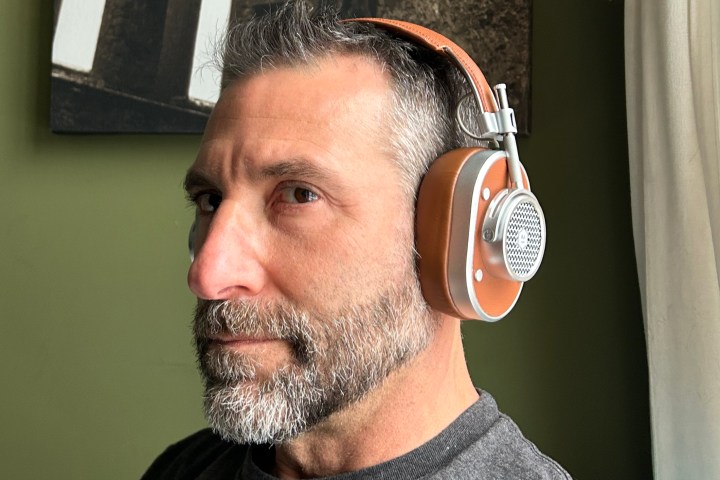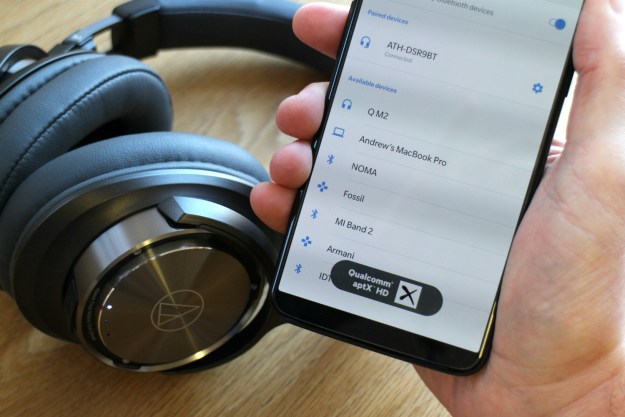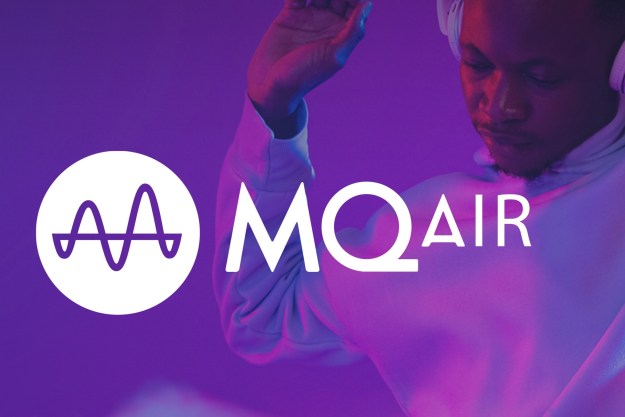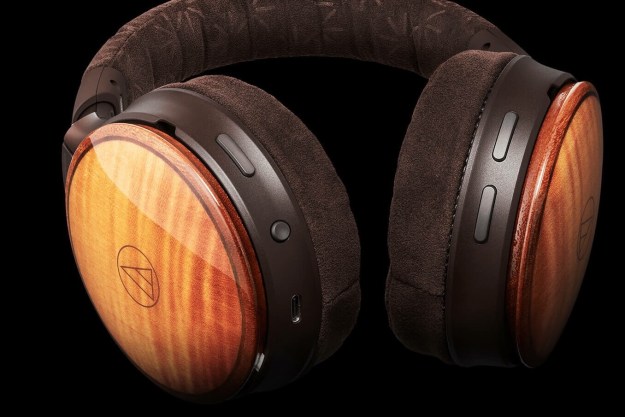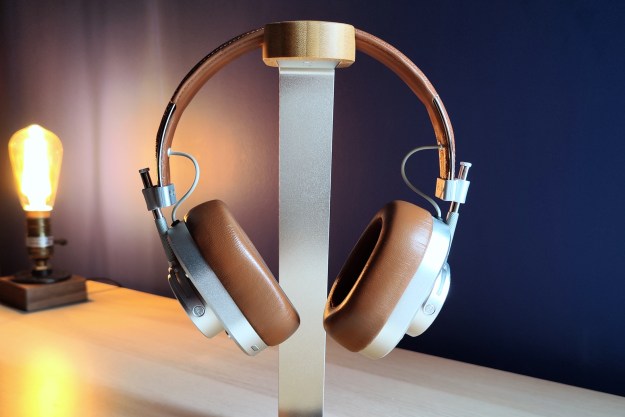
- Top-quality materials/build
- Unique styling
- Excellent sound
- aptX Adaptive
- USB-C digital audio
- Good battery life
- Pricey
- No ANC/transparency
- May not please bass fans
- iPhones miss out on best wireless/digital sound quality
Master & Dynamic (M&D) has updated its MH40 Wireless headphones for 2023, but you’d be hard-pressed to realize it just by looking at them side by side with the originals from 2019. They effectively are physically identical. And yet, the new version sells for $399 — $100 more than their predecessors.
So why would you consider upgrading, or buying the new MH40 W over their many excellent competitors? Let’s check them out.
What’s changed?
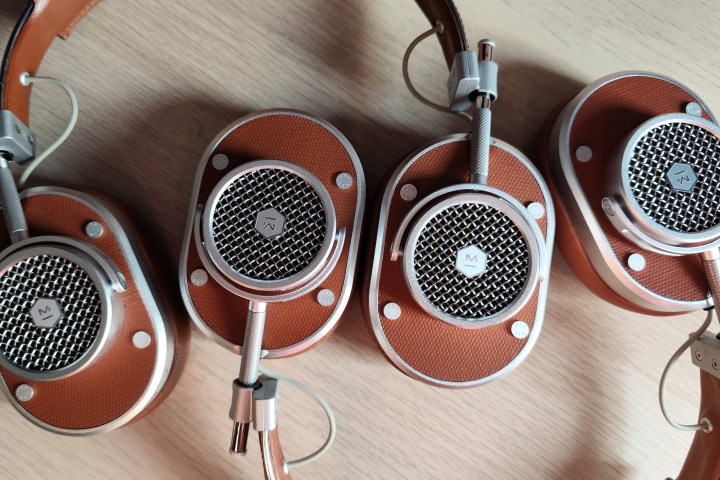
In a hurry? Here’s the TL;DR on the new 2023 model:
- Longer battery life (30 hours versus 18)
- Faster charging
- Redesigned titanium drivers
- Wireless hi-res audio via Snapdragon Sound (aptX Adaptive)
- Digital audio input via USB-C
- Improved microphones
- Bluetooth 5.2 (versus 5.0)
- App-based EQ, sidetone, firmware updates
Unmatched design
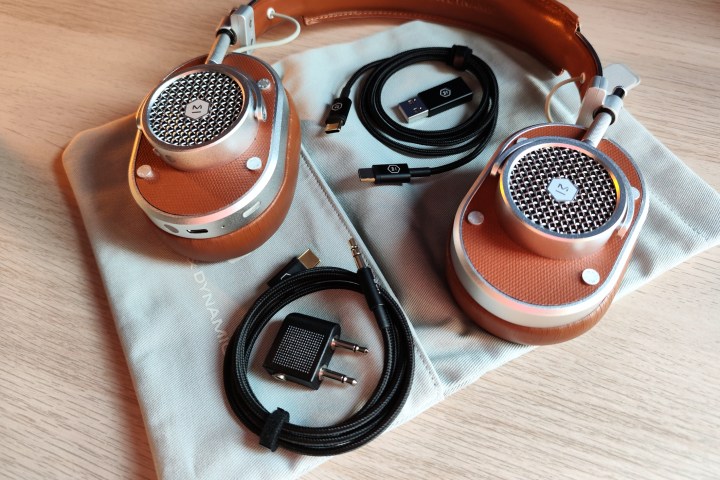
A big part of the M&D product experience is the design. If you’re content with basic black plastic headphones, let me save you some time and money: the MH40 W aren’t the headphones you’re looking for. If, however, you feel that your headphones should help you stand out from the crowd (and not in a neon cat ears kind of way), the MH40 W remain one of the classiest ways to go.
The 2023 model keeps every single original element intact. The vintage aviator-inspired look is at its most authentic in the cans’ silver/brown guise as seen in the photos, but you can also pick from gunmetal/black, black/black, silver/navy, and silver/grey combinations.
The use of leather, metal, and aluminum gives the headphones a heft and a feel that’s undeniably luxurious, while somehow retaining the spartan, utilitarian vibe of the cockpit equipment they emulate.
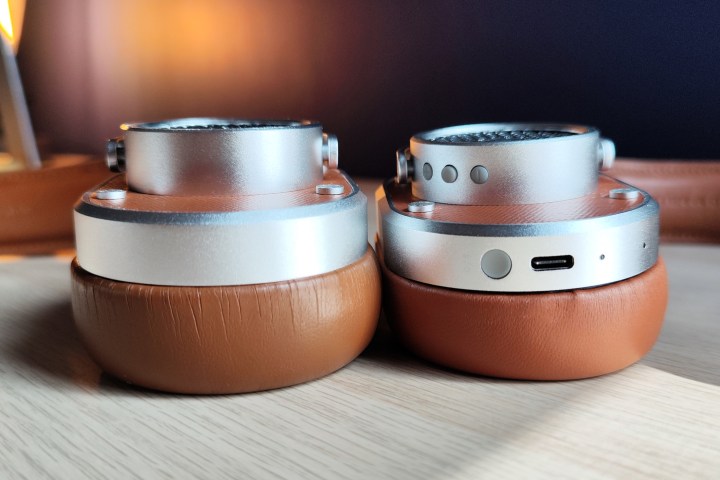
If you look very closely, you’ll notice the only two visible physical updates: The two mics on the right earcup are now nestled behind windscreens, and the magnetically-latched earcushions are a little thicker. And if you drop both on a scale, you’ll notice that the 2023 model is just a tad heavier (9.95 ounces versus 9.75 ounces).
To me, the wearing experience is unchanged despite the thicker earcushions. The MH40 W are very comfortable cans for extended periods, with the same caveats as before: they will shift around if you engage in any real physical activity, and those lambskin-covered earcushions feel good against your skin but aren’t exactly breathable. So, again, heavy exertion isn’t recommended.
And those with small heads take note: there isn’t a ton of adjustment room on the slider posts (just 12mm of travel per side versus almost 35mm on the Sony WH-1000XM5), and M&D has chosen to err on the side of larger heads, so even the smallest fitting may place the bottom of the earcups too low for you.
Still missing some features
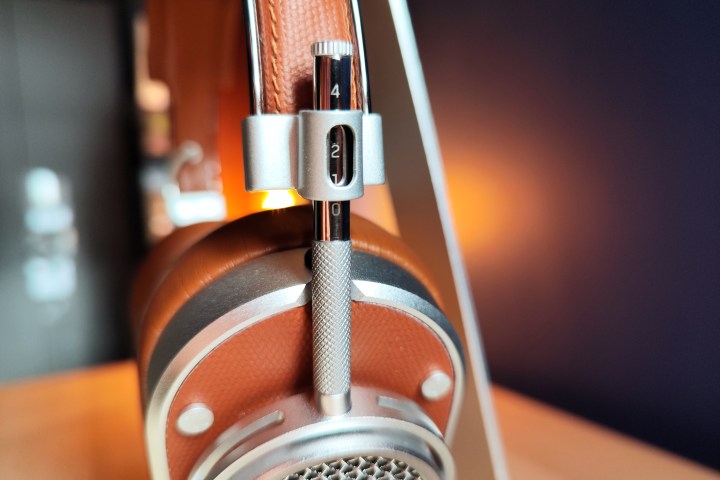
Unfortunately, despite the increased price, there’s still no active noise cancellation (ANC) on these cans. It’s not a deal-breaker — the earcushions provide a very good level of passive noise isolation — but it’s something to keep in mind if you’re travel-minded or find yourself trying to work in very busy locations.
I confess to being a bit surprised, however, at the ongoing lack of a transparency mode. I only say that because the 2023 model has added side-tone — the ability to hear your voice more clearly when in phone calls — which is a nice touch. Generally, when side-tone is offered on headphones, it goes hand-in-hand with some kind of transparency feature, but not on the new MH40 W.
On the bright side, with no ANC or transparency features, the controls are effortless to master and use. Two small volume buttons flank a raised multifunction button on the right earcup, giving you access to every command you could need. I’m also going to give M&D props for a change that may seem insignificant, but that I love: All it takes to power the new version on and off is a single, short press on the power/pairing button. The original model needs long presses for both — hooray for the little things!
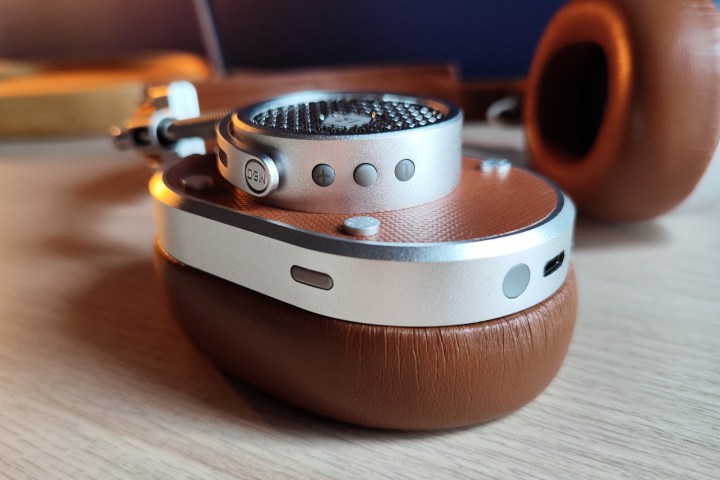
From a pure usability perspective, the biggest improvement is battery life. The first-gen headphones had a barely acceptable 18-hour runtime between charges (even on ANC cans that require more power, I consider 20 hours to be an absolute minimum) so having up to 30 hours on the new model is a welcome change. There’s even been a slight improvement in how quickly they charge (6 hours of playtime after 15 minutes versus 9 hours after 30 minutes).
It’s all about the audio
Still, I think the biggest reason to consider the new MH40 W is M&D’s work on audio performance. There are four technical improvements at play: redesigned drivers, which M&D says provide “more expansive sound,” better Bluetooth audio via the addition of the aptX Adaptive codec (Android only), four app-based EQ presets, and the ability to pipe digital audio directly into the headphones via USB-C.
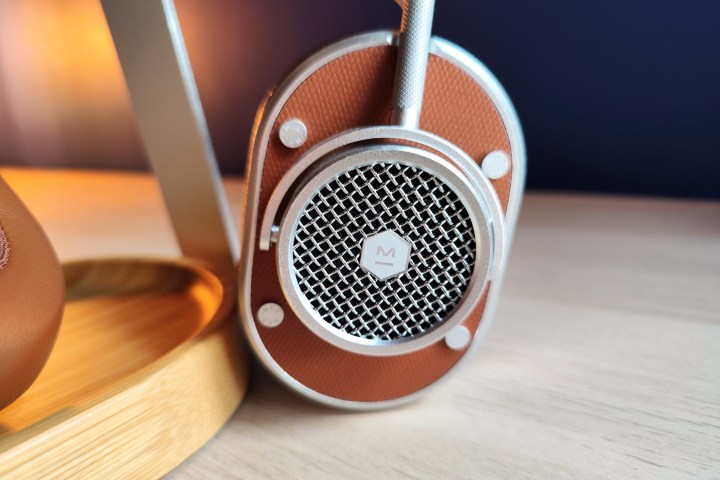
Of these four improvements, the only one that’s worth shelling out for is the USB-C digital audio. I’m going to assume that if you’re even remotely considering dropping $400 on a set of headphones, you want to be able to experience the best audio quality that those cans can produce, without needing to spend even more money on accessories.
USB-C digital is the key to making that happen. To be clear, wireless audio quality is really good, with excellent clarity, a very balanced sound signature, and a snappy response that keeps instruments like cymbals and kick drums from muddying the soundstage. Thanks to a bump from aptX to aptX Adaptive, those with compatible Android phones will get a much higher fidelity signal than the original MH40 W. But these cans sound even better when you plug them in.
A direct digital connection means that your Android-only smartphone (sorry iPhone owners) or computer can send a full-quality, lossless signal to the MH40 W’s onboard digital-to-analog converter (DAC), which is capable of rendering up to 24-bit/96kHz resolution.
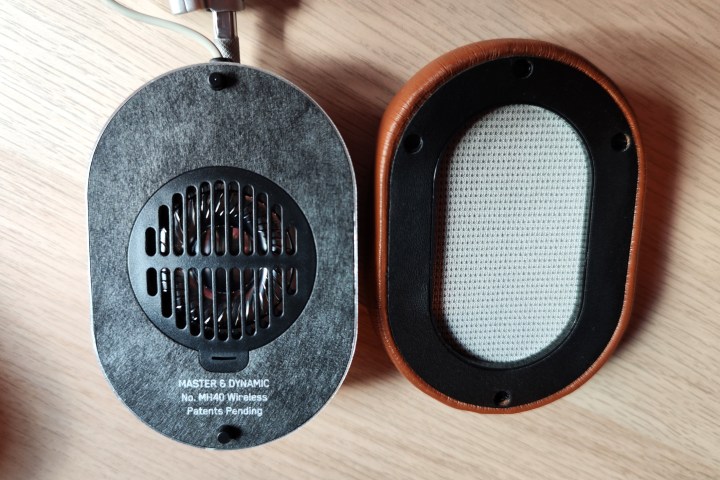
Assuming you have access to a lossless audio source — like Amazon Music, Apple Music, Tidal, or your own collection of FLAC files — you’ll get better dynamic range, with an extra level of precision that lets you hear details that even the impressive aptX Adaptive codec can’t completely reveal. As a bonus, you can charge the headphones at the same time when using USB-C digital audio, something the 2019 version couldn’t do.
On the previous model, the only way to get equivalently high-quality sound was by using a third-party headphone DAC/amp dongle in conjunction with the analog input. Depending on the DAC/amp, that could easily set you back another $100, which is why I think it’s arguable that USB-C digital audio alone might justify the 2023 model’s higher price.
If you already own the 2019 model, it’s worth noting that the new drivers (now made from titanium instead of PET) do offer a slightly expanded soundstage as promised, but they don’t make a big impact on bass response. I still find the MH40 W are on the very edge of what works for me in terms of low-end. Even with the newly available “bass boost” EQ preset, I don’t think there’s enough oomph to satisfy those who want to feel the bass-iest parts of their favorite tracks. If your tastes veer toward classical, folk, piano/trumpet-led jazz, acoustic, opera, or synth-pop, I doubt you’ll mind at all. Hip-hop, blues, rap, and EDM mavens may find themselves wanting more.
Call quality can be really good, especially in quiet locations, and having the side-tone option is great for reducing the fatigue that can come with being forced to listen to your muffled voice (plus you tend to shout when that happens). However, there’s little in the way of noise-canceling for disruptive background sounds, which will prompt your callers to peevishly ask you to call back when you’re not standing in a busy intersection.
Are they worth it?
I think M&D has given the MH40 Wireless some meaningful enhancements for 2023. But as with the originals, my guidance remains the same: you buy these cans because of their unique style, craftsmanship, and excellent sound quality, but also knowing that you’re forgoing features like ANC, transparency mode, and wear sensors that have become nearly ubiquitous on wireless cans that cost half as much.
For some, that tradeoff will be worth it — no one ever said that high style and high-quality materials were cheap — but if you’re looking for a better wireless headphone bang for your bucks, there are several excellent and more affordable alternatives including the $349 Sennheiser Momentum 4 Wireless, $349 Sony WH-1000XM4, and the $379 Bose Noise Cancelling Headphones 700.
Editors' Recommendations
- Best wireless speakers for 2024: Sonos, JBL, KEF, and more
- Dali says its latest wireless headphones achieve electrostatic levels of clarity
- $2,199 Hed Unity Wi-Fi headphones are the first to offer lossless hi-res audio
- NAD’s CS1 adds wireless streaming music to any audio system
- What is aptX? Cutting through the clutter of Qualcomm’s codecs






